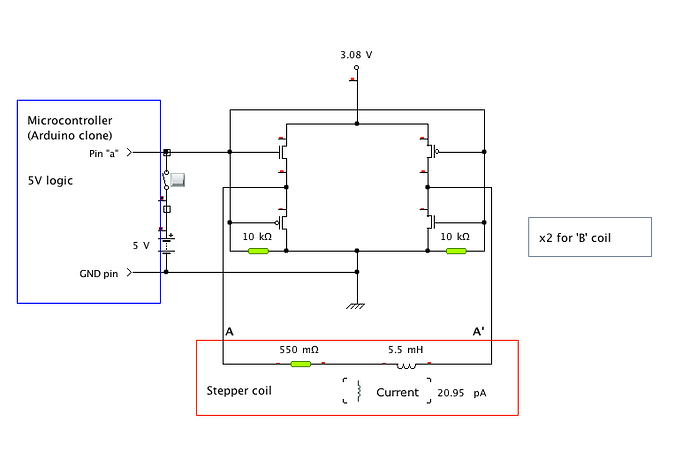Hello,
I am currently trying to design a controller for two high power stepper motors, ideally using an Arduino and the stepper motor library.
However, for the torque at the speeds I require, the stepper motors are rated at over 3A per coil (bipolar, NEMA 34). Ideally, I believe I require 2 high current H-bridges per motor to drive from the micro controller, preferably rated to 4.5 - 5A.
However, the highest rating H-bridges I’ve been able to find so far are only rated to 2.2A (peak).
Is it possible to get cheap H-brigdes with the required output with 3.3 - 5V input logic?
If not, is it conceivable to use two or even three lower rated H-bridges in parallel? Something like pololu.com/product/2130, the DRV8833 Dual Motor Driver Carrier, to reduce the current required through each H-bridge? Even three of these per motor is cheaper than a complete CNC Stepper Motor driver…
Similarly, is it also possible to get current level shifters?
Cheers,
An Opulent Banjo Premiere

